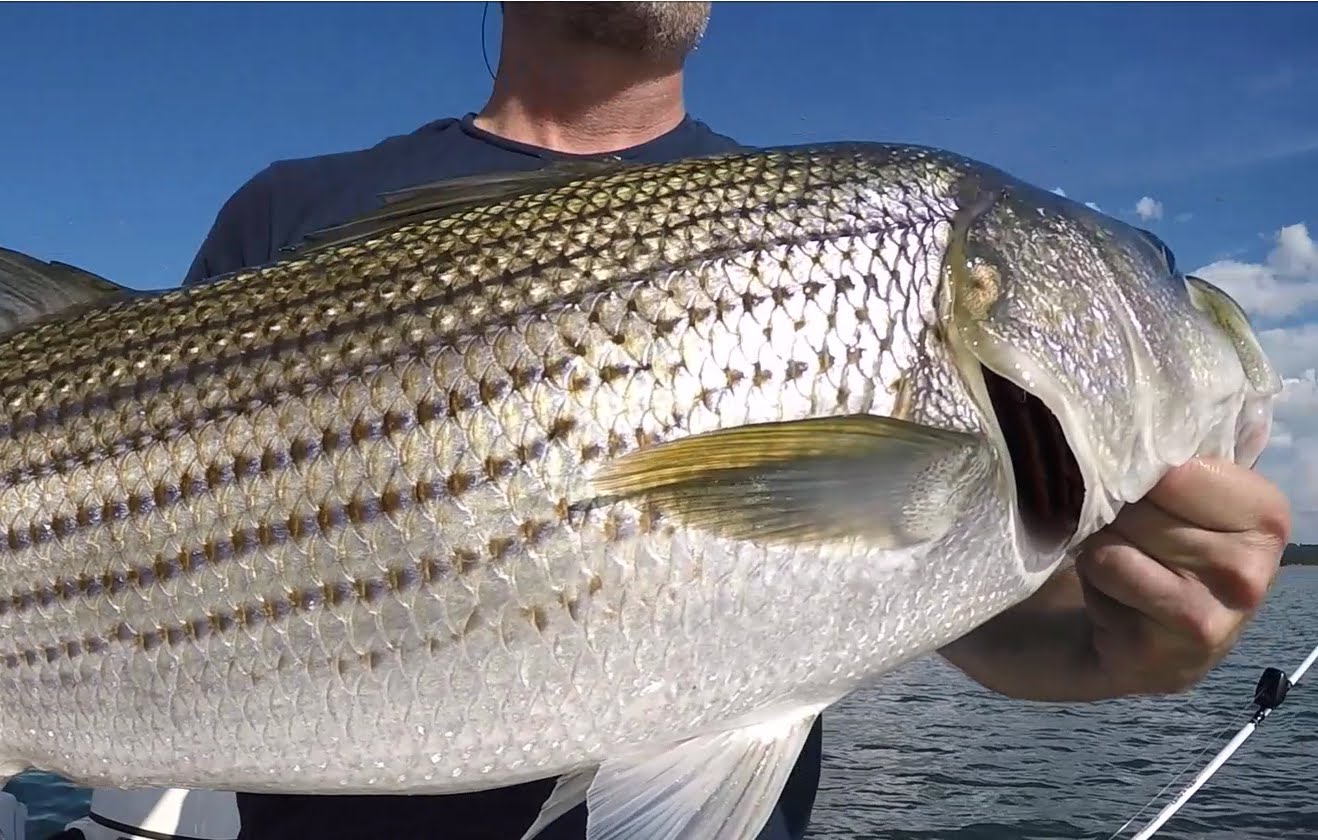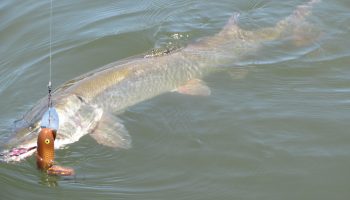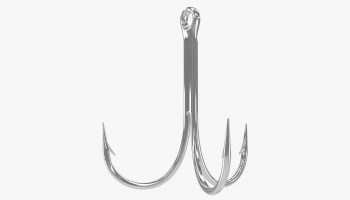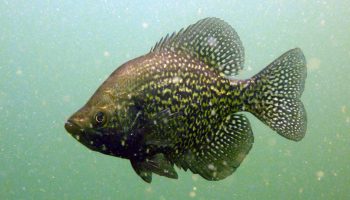From Virginia to Maine, striped bass (Morone saxatilis) are often the center of every hardcore angler’s universe. Strong, hard-striking and gorgeous, with fleeting hues of pink and purple, the extraordinary bass is revered by sportsmen along the coast.
Yet most fishermen who spend more than a few days on the water each season acknowledge that the dynamics of striped bass fishing have changed considerably. Anglers saw shifts in striper size and abundance for well over a decade, with the latest science — a stock assessment released in 2014 — pretty clear in its conclusions: Numbers have diminished gradually but significantly since 2006.
As with most other bass, stripers will tend to stay closer to the surface during the fall and spring and then go deep during the hotter summer months. For those spring and fall months, you can have some success with top water lures such as poppers and minnow lures that suspend just below the surface. For those summer months, some deep diving crank baits will produce some nice keepers. Also, working some jigs or flashy Roadrunner lures will get get you results.
Contents
Striper Gear
The first thing you need for striper fishing is the proper gear. I prefer the Yozuri Pencil. This bait is designed to dart back and forth across the top in what is commonly referred to as “walking the dog”. The action of this bait is really what separates it from other “dog walking” style baits because it will maintain that desired side to side action whether you are working it slowly, or trying to burn it as fast as you can. It has incredibly sharp hooks, great sound, and you can cast it a mile.
The next thing you need is a long, stiff, fast action rod. You can use a flipping stick if you’re not able to have a rod designated solely for topwater fishing, but I recommend getting one for topwater plugs and frogs because you’ll want that intended design when it comes to this particular style of striper fishing. For the reel you want high speed, at least 7.3.
Striped Bass Fishing Techniques for Fooling Finicky Bass
Every year I hear of instances where schools of bass refused to hit anything thrown at them. I’ve had my share of disappointing outings, however, over the years, I’ve honed a few techniques that often convert that frustration into success.
On most occasions, when stripers are being extremely finicky, their feeding activity is taking place right near the surface. In addition, the water is usually either very clear or very off-colored, and baitfish schools are nearby. Under these conditions, my observations suggest that the fish are either seeing too much of a lure, or not enough of it.
Have a Need for Speed
Have you ever had a striper smack your plug as you hurriedly reeled in the last ten yards of your retrieve to make another cast? Or has a bass continually boiled, bumped, or rolled behind your offering without grabbing it? Often times these things occur when the water is crystal clear and the surf is fairly calm. Under these conditions, a simple increase in retrieve speed may be all that is needed to trigger a solid strike. One outing, almost 25 years ago, gave me some insight into the effectiveness of speed. During that last week in September, false albacore consistently invaded the surf, and once a school of these speedsters were within casting range, all fishermen on the scene would start throwing metal or small Polaris-style poppers. The trick was to retrieve these lures as fast as possible. As a school pushed past me, I finally had an albie – or so I thought – explode on my popper.
Work the White Water
When stripers are being finicky about taking an artificial lure in clear water, and there is white-water created by breaking waves nearby, use it to your advantage. I’ve been lucky enough to catch fish, at times, along a crowded beach of empty-handed fisherman because I recognized that the bass would only take a plug in the limited white water available. Precisely timing my casts with the breaking waves and having the lure work on the back edge of the wash was the ticket.
Do Nothing
Many years ago, after a successful fishing trip to Canada, I was confronted with a very problematic school of bass back home. Acres of stripers were slurping baitfish off the surface all around me in the dark, yet my plug came through the school without so much as a bump. I had a similar encounter with finicky walleyes in Canada a few weeks earlier, and wondered if the technique that helped me connect with the north-of-the-border walleye would work on these hometown stripers.
Get Creative with Colors
Certain color patterns perform better under specific conditions when feeding stripers are reluctant to strike. In crystal-clear, calm-water conditions, I’ve had my best results using the most natural and subtle color patterns. Patterns and lures imitating the prevailing baitfish are the first to come out of my plug bag. With advances in modern manufacturing technology, some lures look almost life-like. Under cloudy-water conditions, I opt first for higher visibility patterns in yellow, yellow and black, red and yellow, or all black. Here, I want to choose an offering that will stand out the most in a murky environment.
Own the Night
Sometimes, when stripers are active toward late afternoon but are rejecting artificial offerings, a little patience can go a long way. Often, after most anglers have given up and gone home, the few that stick it out another hour into darkness are rewarded with the best bite of the day. The cover of darkness often turns nippers into strikers.
Get Down and Dirty
Although I am rather stubborn about abandoning artificial lures under most circumstances, the fact remains there will be times when quality stripers will only respond to the real thing. This is especially true when schools of bunker are being followed by big striped bass. At this time, a snagged bunker will often be the only offering that will take a good fish. The same can be true with clams, bloodworms, cut baitfish, and other live or fresh baits.
Be a Tease
When stripers are in their lure-rejection mode, there are a few reliable tactics that always seem to save the day for me during the season. One tactic that has worked for generations of fishermen is the use of a teaser in front of the main lure offering. These little wisps of feather, bucktail, flash and plastic, or a combination of all, account for thousands of finicky bass each year. Bass often crush these tiny morsels with reckless abandonment, while ignoring a more substantial target. Although I primarily fish without using a teaser during the season, because they cuts down on casting distance, I always carry a few in my bag for special situations. These are a few techniques that have worked for me and other fishermen over the years.






